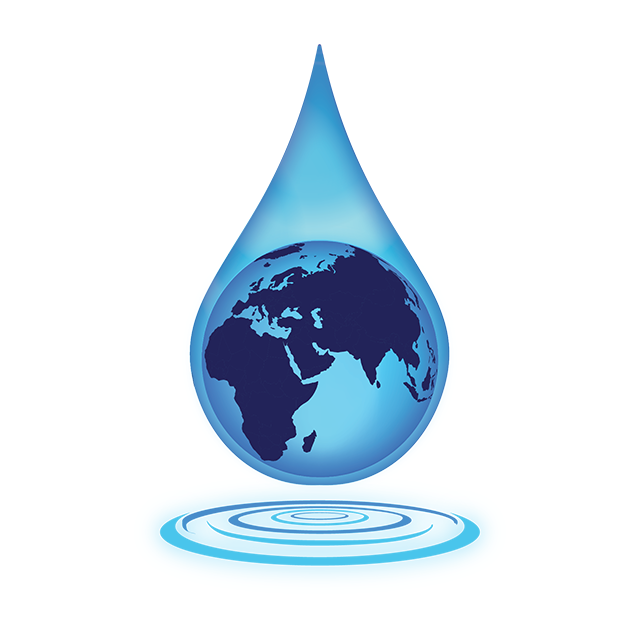
A CRISE GLOBAL DE ÁGUA
A NECESSIDADE GLOBAL
Doenças relacionadas à áqua matam quase 1.000 crianças por dia.1 Na verdade, mais crianças morrem todos os dias por falta de áqua potável e saneamento do que de malária, HIV/AIDS e sarampo juntos.2
Embora as organizações humanitárias e de desenvolvimento continuem a direccionar recursos para deter a crise mundial da água, a prestação de serviços sub-par, juntamente com a manutenção inadequada, resulta numa taxa inaceitavelmente alta e a não funcionalidade do sistema de água em apenas alguns anos após a instalação.
663 milhões de pessoas, cerca de 9% da população global, não têm acesso às melhores fontes de água potável.
O Vazio
Aproximadamente 663 milhões de pessoas, cerca de 9% da população global, não têm acesso às melhores fontes de água potável; 48% dessas pessoas vivem na África Subsariana.3 De facto, em 21 países, mais de um terço da população não tem acesso à água potável; 16 desses países estão na África Subsariana.4
Mais de dois terços das pessoas sem acesso à água potável vivem com menos de 2$ por dia.5 Nos países de baixa e média renda, 38% das unidades de saúde não possuem fonte de água.6
A crise da água é o risco global nº 1 com base no impacto na sociedade como uma medida de devastação e o risco global nº 8 com base na probabilidade de ocorrência dentro de 10 anos.7
Mais crianças morrem todos os dias por falta de água potável e saneamento do que por malária, HIV/AIDS e sarampo combinados.
MULHERES E CRIANÇAS
Mulheres e crianças sofrem desproporcionalmente as consequências negativas da falta de acesso à água limpa. Em África e na Ásia, mulheres e crianças jovens andam em média 6,7 quilómetros por dia apenas para colectar água,8 o que equivale a uma média de 200 milhões de horas por dia colectando água.9 72% das famílias dependem das mulheres para obter e transportar a água quando não há fonte de água em casa.10 O efeito cascata associado a este processo inclui falta assiduidade escolar e o aumento do risco de perigo pessoal.
Mais crianças morrem todos os dias por falta de água potável e saneamento do que por malária, HIV/AIDS e sarampo combinados.11 As doenças relacionadas à água são uma das principais causas de morte de crianças menores de cinco anos, matando quase 1.000 crianças por dia.12
Estima-se que cada dólar gasto em água e saneamento produza um retorno económico de 4$.
PERDA ECONÓMICA GLOBAL
Além do custo humano, o Banco Mundial estima que a falta de acesso à água potável e saneamento resulta em uma perda económica global de $260 bilhões dólares anuais.13 A África Subsariana perde cerca de 4,3% do seu PIB por falta de abastecimento de água e saneamento adequado.14 Por outro lado, estima-se que cada dólar gasto em água e saneamento produza um retorno económico de 4$.15
O custo de oportunidade da colecta de água traduz’se em 24 biliões de dólares em benefícios económicos perdidos por ano.16 Além disso, das 159 milhões de pessoas que dependem da água retirada directamente de rios, lagos e outras águas superficiais, 7 em cada 10 vivem na África Subsariana, oito vezes mais do que qualquer outra região.17
O acesso à água potável e ao saneamento é um direito humano fundamental e básico, essencial para um ambiente saudável e uma qualidade de vida adequada.
DIREITO A UM AMBIENTE SAUDÁVEL
O acesso à água potável e ao saneamento é um direito humano fundamental e básico, essencial para um ambiente saudável e uma qualidade de vida adequada.
O fornecimento de acesso sustentável à água limpa fornece um caminho para mitigar a mortalidade e a morbidade, aliviando a desnutrição, a desigualdade de género e as disparidades nas oportunidades económicas.
Notes:
Source: UNDP Human Development Report 2006, Beyond Scarcity: Power, poverty, and the global water crisis. ↩
Source: WaterAid (2016), "Water: At What Cost?" ↩
Source: UNDP Human Development Report 2006, Beyond Scarcity: Power, poverty, and the global water crisis. ↩
Source: WaterAid (2016), "Water: At What Cost?" ↩
Source: WHO/UNICEF Joint Monitoring Programme for Water Supply and Sanitation, "Progress on Sanitation and Drinking Water 2015" ↩
Source: WHO/UNICEF Joint Monitoring Programme for Water Supply and Sanitation, "Progress on Sanitation and Drinking Water 2015" ↩
Source: World Economic Forum, “Global Risks 2015 Report” ↩
(The) Right to Water, Fact Sheet No. 35. United Nations, OHCHR, UN-HABITAT, WHO ↩
Source: UN Water, www.unwater.org/worldwaterday
Source: WHO/UNICEF Joint Monitoring Programme for Water Supply and Sanitation, "Progress on Sanitation and Drinking Water 2015" ↩
Source: WHO/UNICEF Joint Monitoring Programme for Water Supply and Sanitation, "Progress on Sanitation and Drinking Water 2015" ↩
Source: WHO/UNICEF Joint Monitoring Programme for Water Supply and Sanitation, "Progress on Sanitation and Drinking Water 2015" ↩
Source: WHO (2012), “Global costs and benefits of drinking-water supply and sanitation interventions to reach the MDG target and universal coverage.” Geneva, Switzerland: WHO Press, World Health Organization ↩
Source: WHO (2012), “Global costs and benefits of drinking-water supply and sanitation interventions to reach the MDG target and universal coverage.” Geneva, Switzerland: WHO Press, World Health Organization ↩
Source: WHO (2012), “Global costs and benefits of drinking-water supply and sanitation interventions to reach the MDG target and universal coverage.” Geneva, Switzerland: WHO Press, World Health Organization ↩
Source: WHO (2012), “Global costs and benefits of drinking-water supply and sanitation interventions to reach the MDG target and universal coverage.” Geneva, Switzerland: WHO Press, World Health Organization ↩
Source: WHO/UNICEF Joint Monitoring Programme for Water Supply and Sanitation, "Progress on Sanitation and Drinking Water 2015" ↩





